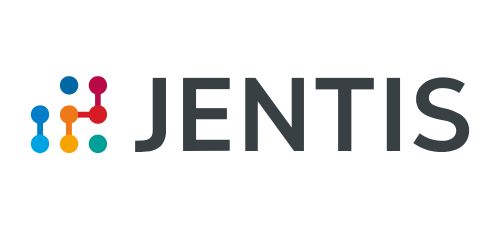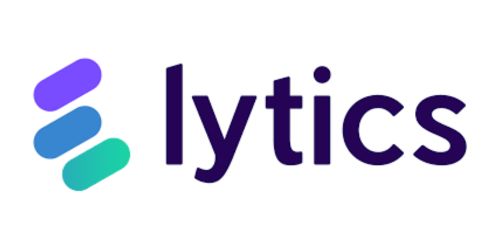From Hospitality to Decision Science: How Matthew Brandt is Revolutionizing Data Analytics
In the leadup to Web Analytics Wednesday Copenhagen Sept 2024, Jomar Reyes got a chance to connect with the international speaker Matty ‘twoshoes’ Brandt
WAW-CPH Partners Sept 2024
Click here to visit the event page
This interview was conducted in the leadup to Web Analytics Wednesday Copenhagen 25 Sept 2024 where Matty was a a featured international keynote speaker.
Few individuals have made the leap from hospitality to data science as successfully as Matthew Brandt, a decision science expert who is shaking up the way companies approach data-driven decision-making.
With a unique blend of empathy, technical know-how, and a rebellious streak, Matthew’s Journey offers valuable lessons for businesses seeking to harness the power of data without losing sight of the human element.
The Origin of “mattytwoshoes”
Matthew’s nickname, “mattytwoshoes,” perfectly encapsulates his dual nature. On the surface, the moniker plays on the classic term “goody two shoes,” suggesting someone who follows the rules to the letter. However, those who know him best understand that his approach isn’t always conventional.
“While I’ve always been a bit of a rule follower, I’ve also been known to push the envelope,” Matthew explains, hinting at a past dotted with minor rebellious acts—like motorbike speeding tickets—along with his willingness to challenge norms in corporate settings. This balance of respect for structure and the desire to innovate would become a defining characteristic of his career in analytics.
A Hospitality Background with a Service-First Mindset
Unlike many who enter the data field, Matthew’s background wasn’t in computer science or statistics. He studied hospitality at the prestigious École hôtelière de Lausanne in Switzerland. It was here that Matthew learned the value of service, an ethos that would shape his approach to data analytics.
“In hospitality, they drill into you that everything is about service,” Matthew recalls. “You must fully understand your clients’ needs before offering solutions.” This service-first mindset has become his guiding principle in the world of data, where he emphasizes the importance of understanding problems deeply before jumping to solutions—a refreshing contrast in an industry often obsessed with quick fixes.
A Data Rebel with a Cause
Matthew’s entry into the world of data analytics happened a little over a decade ago, when he was hired by a small HR company to manage technology. He worked on everything from CRMs to statistical analysis, but what stood out to his colleagues was his ability to listen and empathize with their challenges.
“People often said, ‘Matty, you always spend so much time understanding me before offering a solution,'” Matthew says. “That’s where I realized that listening is incredibly powerful in data analytics.”
This approach soon became Matthew’s calling card. While the data industry focuses heavily on numbers and tools, Matthew insists that real impact comes from understanding the bigger picture—how people and processes interact.
Championing Decision Science
In recent years, Matthew has shifted his focus to a relatively new field: decision science. This emerging discipline aims to bridge the gap between data analysis and strategic decision-making, helping organizations not only gather insights but also make smarter, more informed decisions.
Matthew is on a mission to demystify decision science, making it accessible for companies of all sizes. “Many people think decision science is only for large organizations with big budgets, but that’s not true,” Matthew insists. “With the right framework, anyone can start applying decision science to improve their decision-making processes.”
Through live training cohorts and workshops, Matthew has developed a streamlined decision-making framework that helps companies bypass the complexity often associated with data analytics. His method, the so-called “Prime Route” framework, emphasizes simplicity and accessibility, proving that decision science doesn’t have to be an intimidating process limited to data giants.
The Human Side of Data
One of Matthew’s core beliefs is that too much emphasis is placed on numbers at the expense of people. He advocates for data analysts to have a more prominent role in decision-making, sitting alongside leadership, marketing, and strategy teams.
“Analysts should be sitting at the decision table,” Matthew says. “They have the skills and access to information to simplify complexity and provide valuable insights to stakeholders.”
This philosophy directly challenges the conventional view that decision-making should be left solely to executives, with analysts merely supplying the data. Matthew believes analysts need to take co-responsibility for decisions, a “spicy take” that is gaining traction as businesses realize the importance of breaking down silos.
AI as an Accelerant, Not a Solution
As artificial intelligence continues to dominate business discussions, Matthew offers a balanced perspective. While acknowledging AI’s potential to revolutionize decision-making, he warns against viewing it as a panacea.
“AI is an accelerant,” Matthew says. “It’s pouring fuel on the fire of decision-making. But just because you have more data faster doesn’t mean you’re making better decisions. You still need a framework to process that information, and that’s where decision science comes in.”
In Matthew’s view, AI can provide unprecedented access to insights, but it doesn’t solve the fundamental issue of understanding and acting on that information. In fact, it can exacerbate problems if not carefully managed.
Building Communities Around Analytics
Matthew’s impact goes beyond his professional endeavors. He’s a key figure in the Swiss data community, co-founding a non-profit called Analytics Camp, which organizes events that bring together professionals from across the data spectrum, including UX designers, researchers, and professors. The goal? To foster collaboration and break down the silos that often separate different disciplines in the data field.
“It’s about building relationships that matter,” Matthew explains. “Data is important, but it’s the human connections that drive innovation.”
Looking Ahead: A Future Where Data Meets Brand
Matthew’s collaboration with Jomar Reyes, founder of the Brand Leadership Community, reflects his broader vision for the future of analytics. Both see a need to align data with brand leadership, ensuring that companies don’t lose sight of their North Star—brand identity—amid the rush to embrace data and AI.
“We often talk about data silos, but we also have human silos,” Reyes points out. “We need to bring people from all parts of the organization—brand, UX, strategy, and data—together.”
For Matthew, the future of data analytics lies in these cross-functional collaborations. The challenges of the next decade, from AI to decision-making, won’t be solved by technology alone. They will require a shift in mindset—one that places people, not just data, at the center of decision-making.
Conclusion
Matthew Matthew’s journey from hospitality to decision science is a testament to the importance of empathy, listening, and collaboration in the data industry. His work challenges the status quo, pushing companies to rethink how they use data and make decisions. In a world where technology often dominates the conversation, Matthew reminds us that the key to success lies not in the tools we use, but in the people behind them.
As more businesses seek to navigate the complex world of data and analytics, Matthew’shuman-centered approach offers a roadmap to smarter, more effective decision-making. And in doing so, he is helping shape the future of an industry that is as much about people as it is about numbers.
Here are 5 tips for analysts and brand professionals from Matthew “Matty” Matthew’s interview:
- Prioritize Understanding Before Acting: Matty emphasizes the importance of deeply understanding a problem before offering solutions. This service-first mindset ensures that decisions are based on fully grasping the context, which is critical for both data analysts and brand professionals.
- Break Down Silos: Matty advocates for collaboration between departments like data, brand, marketing, and strategy. To make informed decisions, analysts and brand professionals should work together, ensuring that insights are shared across teams for a more holistic approach.
- Analysts Should Play a Bigger Role in Decision-Making: Matty believes that analysts should not just provide data but also participate in the decision-making process. Their ability to interpret data and simplify complex information is key to guiding strategic decisions.
- Use Data to Support, Not Dictate Decisions: While data is important, it shouldn’t be the sole driver of decisions. Matty advises both analysts and brand professionals to combine data insights with human intuition, experience, and understanding of the brand’s identity to make well-rounded decisions.
- Simplify Complex Processes: Matty’s approach to decision science involves using a framework that makes decision-making more accessible. Both analysts and brand professionals should strive to simplify complex processes, making data and decision science easy for everyone in the organization to understand and apply.






